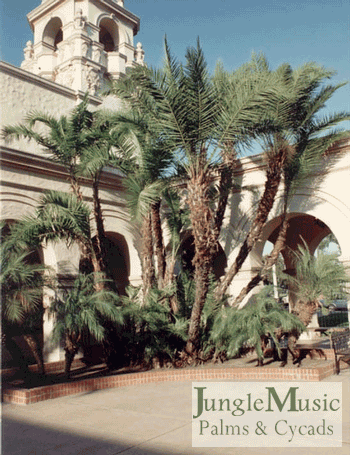The palm species shown below all naturally sucker. They produce a primary stem and then produce offsets (additional stems) from the primary stem. Some sucker sparingly, others quite heavily. But, they do this naturally without any assistance by the grower. Oppose this type of palm compared to the single trunk species above that are planted several to a pot to give the appearance that they sucker. But, the latter do not sucker. The list of suckering species includes both pinnate and fan palms. And, species with both thick and thin trunks. Some are spineless while others have spines. Some are shorter species while others get quite tall. Finally, some like the Phoenix reclinata, can take up a large area of your garden. Therefore, it’s important to know the palm species you’re getting and whether it suckers or not.
ALL THE PALMS BELOW ARE EXAMPLES OF SUCKERING PALM SPECIES
Phoenix reclinata, the Senegal Date Palm |
 Phoenix reclinata, the Senegal Date Palm |
Dypsis lutescens, the Areca Palm |
 Dypsis lutescens, the Areca Palm |
.gif) Chamaedorea costaricana |
%20(480x640)%20-%20Copy.jpg) Chamaedorea costaricana |
.jpg) Acoelorrhaphe wrightii |
Caryota mitis |
Caryota mitis |
Chamaedorea microspadix in nursery pot |
Chamaedorea microspadix in nursery pot |
Licuala spinosa |
Pinanga coronata |
Rhapis excelsa |
 Rhapis multifida |
Serenoa repens |
Zombia antilarum |
Ptychosperma macarthuri |
Hyphanae dichotomoa |
.jpg) Dypsis pembana by AB |
- PLUMERIA TREES FRAGRANT BLOSSOMS - December 15, 2024
- AGAVE ATTENUATA A “DOCTOR SEUSS” PLANT - December 15, 2024
- ENCEPHALARTOS CERINUS - December 15, 2024












